
Hangar H is a listed hangar located on Magretheholm in Copenhagen, Denmark.

Hangar H is a listed hangar located on Magretheholm in Copenhagen, Denmark.
Magretheholm was the last of the major reclamnations to take place at the Holmen naval base. Located outside Christianshavn Rampart, it was made during World War I for a new facility for seaplanes. Then known as Seaplane Hangar H53, Hangar H was designed by Christian Olrik and built in 1921. It was originally known as Then known as Hangar H53 and used for seaplanes. Marinens Flyvevæsen was based at the site until 1950 when it was transferred to the newly founded Royal Danish Air Force.
It was adapted for use as a company headquarters by Dorte Mandrup in 2000. [1]
Hangar H is now used by Danmarks Designskole. [2]

Ribnitz-Damgarten is a town in Mecklenburg-Vorpommern, Germany, situated on Lake Ribnitz. Ribnitz-Damgarten is in the west of the district Vorpommern-Rügen.

The Royal Danish Navy is the sea-based branch of the Danish Armed Forces force. The RDN is mainly responsible for maritime defence and maintaining the sovereignty of Danish territorial waters. Other tasks include surveillance, search and rescue, icebreaking, oil spill recovery and prevention as well as contributions to international tasks and forces.

Floyd Bennett Field is an airfield in the Marine Park neighborhood of southeast Brooklyn in New York City, along the shore of Jamaica Bay. The airport originally hosted commercial and general aviation traffic before being used as a naval air station. Floyd Bennett Field is currently part of the Gateway National Recreation Area's Jamaica Bay Unit, and is managed by the National Park Service (NPS). While no longer used as an operational commercial, military, or general aviation airfield, a section is still used as a helicopter base by the New York City Police Department (NYPD), and one runway is reserved for hobbyists flying radio-controlled aircraft.

A hangar is a building or structure designed to hold aircraft or spacecraft. Hangars are built of metal, wood, or concrete. The word hangar comes from Middle French hanghart, of Germanic origin, from Frankish *haimgard, from *haim and gard ("yard"). The term, gard, comes from the Old Norse garðr.

A submarine aircraft carrier is a submarine equipped with aircraft for observation or attack missions. These submarines saw their most extensive use during World War II, although their operational significance remained rather small. The most famous of them were the Japanese I-400-class submarines and the French submarine Surcouf, although small numbers of similar craft were built for other nations' navies as well.
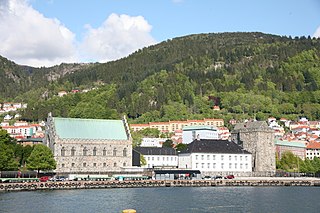
Bergenhus fortress is a fortress located in Bergen, Norway. Located at the entrance of Bergen harbour, the castle is one of the oldest and best preserved stone fortifications in Norway.
H53 may refer to:
Sands Point Seaplane Base is a seaplane landing area in Manhasset Bay, situated two miles (3 km) northwest of downtown Port Washington in the Town of North Hempstead, in Nassau County, Long Island, New York, United States.
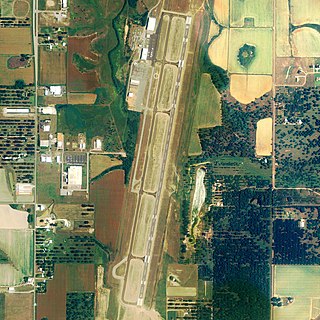
H. L. Sonny Callahan Airport is a public-use airport located three nautical miles southeast of the central business district of Fairhope, a city in Baldwin County, Alabama, United States. It is owned by the Fairhope Airport Authority.

The Aalborg Defence and Garrison Museum is a military museum in Aalborg, Denmark that covers all branches of Danish defence organizations.
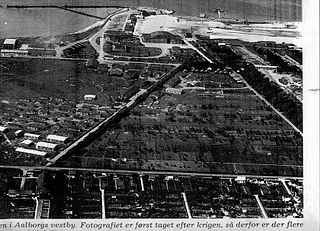
Seefliegerhorst Aalborg was a German seaplane base at Aalborg during the occupation of Denmark 1940 to 1945

The Royal Danish Naval Academy educates and commissions all officers for the Royal Danish Navy. Having existed for more than 300 years, it is the oldest still-existing officers' academy in the world.

Holmen is a water-bound neighbourhood in Copenhagen, Denmark, occupying the former grounds of the Royal Naval Base and Dockyards. In spite of its name, deceptively in singular, Holmen is a congregation of small islands, forming a north-eastern extension of Christianshavn between Zealand and the northern tip of Amager.

Holmen Cemetery is the oldest cemetery still in use in Copenhagen, Denmark. It was first located next to the naval Church of Holmen in the city centre but relocated to its current site on Dag Hammarskjölds Allé in the Østerbro district in 1666. The cemetery originally served as a burial site for indigent sailors in royal service and their families, complementing the military Garnisons Cemetery, from 1711 located on a neighbouring site.

Royal Naval Air Station Lawrenny Ferry(RNAS Lawrenny Ferry, also known as HMS Daedalus II) is a former Royal Naval Air Station located near Lawrenny, Pembrokeshire, Wales. It was operational between 1941 and 1946, being used by the Royal Navy, 1941 - 1943 and then put into a Care & Maintenance status.
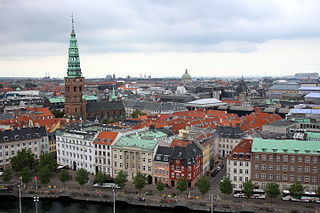
Ved Stranden is a canal side public space and street which runs along a short section of the Zealand side of Slotsholmen Canal in central Copenhagen, Denmark. It begins at Holmens Kanal, opposite the Church of Holmen, and runs west along the canal for one and a half blocks before widening into a small, triangular space adjacent to Højbro Bridge and Højbro Plads. The name of the street refers to Gammel Strand, 'Old Beach', which it formed part of until 1961.
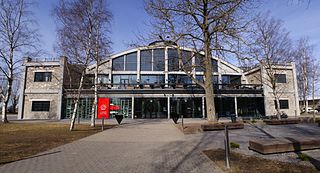
The Seaplane Harbour is a maritime museum in Tallinn, Estonia, which opened in spring 2012. The museum is part of the Estonian Maritime Museum.

Avedøre Airfield, located in Hvidovre Municipality, west of central Copenhagen, is the oldest operational airfield in Denmark. It is situated at the intersection of Gammel Køge Landevej with the Ring 3 motorway. It is now known s Aeronautisk Aktivitetscenter Avedøre (AAA) and used as a centre for vintage aircraft. The oldest buildings at the site are two wooden hangars that date from its establishment in 1917.
Kristiansand Naval Air Station was a water military air base operated by the Royal Norwegian Navy Air Service between 1919 and 1940. Situated at Tangen in the city center of Kristiansand, Norway, it consisted of three hangars. The station was to house both reconnaissance and fighter aircraft.

Europa was a seaplane carrier of the Italian Regia Marina. Originally laid down as the merchant ship Manila, she was renamed Salacia in 1898, and then sold to German and then Italian shipping companies in 1911 and 1913, respectively. She became Quarto in 1913, and in February 1915 she was purchased by the Italian fleet, renamed Europa, and converted into a seaplane carrier with a capacity of eight seaplanes. She served as a seaplane base in Valona during World War I and supported the Allied response during the Battle of the Strait of Otranto in 1917. She was quickly sold for scrap in 1920 after the war ended.